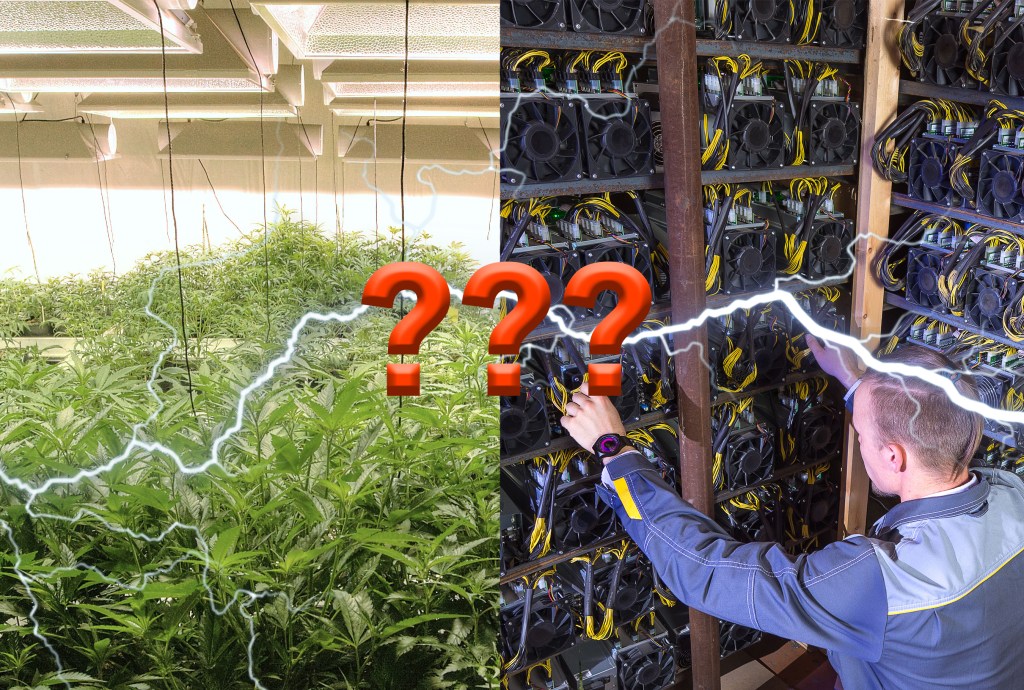The latest cannabis craze is a technique for making highly concentrated marijuana extracts, also known as “dabs,” by simply applying measured heat and pressure to a marijuana bud using a common hair straightener.
This DIY method only really began taking off among hashish connoisseurs a few months ago, yet there’s already a commercial market for what aficionados call Rosin Tech—including industrial-sized production setups—and a growing sense among foresighted weedheads that these chemical-free, explosion-free, quick-and-easy concentrates will soon come to dominate the market.
Videos by VICE
It started when Instagram extraction guru @soilgrown “squished the bud seen around the world” after accidentally stumbling upon the technique while pressing some hash at home. Now he’s the widely acknowledged founding father of a large and growing movement.
“I was sitting in my garage pressing out some half melt [lower quality] hash to dab, when I accidentally over pressed, separating the oil from the contaminant,” said @soilgrown, who prefers to remain anonymous, but says he’s been involved in the cannabis industry since 2007 and specializes in solventless extraction methods. “Without even thinking about it, I rolled it all back together into a ball and repressed it. Months later, however, that experience inspired me to place a ball of hash inside a hair straightener and press as hard as I could. The oil again separated from the contaminant, but this time I collected the oil and dabbed it, finding it changed from a 3 star melt to a 6 star melt“—based on a standardized measure of the potency and purity of various cannabis concentrates—”so I quickly shared my finding with the world.”
“Rosin Tech has already made an incredible impact on the hash community,” he added, “and will continue to spread as more people discover the incredible ease of producing amazing solventless oil without expensive equipment or dangerous chemicals.”
Everything you need to transform buds or lower quality hash into dabble Rosin in just minutes. Photo by the author
For the time being the vast majority of “dabs,” which can reach 90 percent THC (tetrahydrocannabinol, the main psychoactive property in cannabis), are made using the chemical solvent butane, to the extent that many people use the term interchangeably with “BHO,” short for butane hash oil.
In Colorado, state-licensed manufacturers produce this product safely and efficiently using proper equipment and standard operating procedures, but elsewhere BHO remains mired in the “bath-tub gin” phase—including tainted product occasionally hitting the streets, and a rash of dangerous explosions caused by unskilled, undisciplined, or unlucky “extraction artists” working in the shadows with makeshift equipment and no oversight.
“What makes it dangerous is not so much the extraction process itself,” Alison Halett wrote in a Wired feature on the perils of “blasting,” “but rather the problem of improper butane ventilation. Butane is highly flammable and it tends to sink, meaning that if you use it indoors or don’t ventilate well, you’ll run into serious trouble. Let some butane puddle in your living room, throw in a thoughtless spark from a cigarette, stove, or—dare I suggest—bong hit, and suddenly your apartment is missing a wall.”
A quick search of “BHO explosion” via Google News shows that few days go by in America without another (reported) incident, and according to Buzzfeed the number of BHO-related fires in 2014 was in the hundreds, “up from dozens” the year before. It remains unclear, however, exactly how many people nationwide have been killed or injured in BHO-related incidents.
Use a hair straightener with adjustable heating. Aim for an ideal temp between 230 and 300 degrees Fahrenheit, and be sure to document your results at each setting until you determine which works best. Photo by the author.
Things could change dramatically, however, if you believe online Rosin Tech communities like The Death of BHO, or ask leading proponent Jeff Church (aka Reverend Cannabis), co-owner of Washington-based marijuana extract company Thinc Pure.
“Rosin Tech is already quite disruptive to the small time processing of BHO,” Church told me. “The large producers are heavily invested in BHO, and will therefore continue making it for a while, but the small guys that open blast a quarter ounce of weed in their backyard would much rather press Rosin in a matter of seconds. Meanwhile, most larger BHO makers have at least privately admitted that Rosin is the killer new extraction method, and many have even started making it for their own head stash.”
Rosin remains in its infancy as a commercial product (High Times first reported on it less than a month ago), but is actually rooted in a long tradition.
“Using a hair straightener is new, but the history of Rosin Tech is actually very long,” Church said. “Cannabis researcher Chris Bennett has detailed an ancient technique where buds were packed in a canvas (most likely hemp) bag and held over a fire until rosin began to flow through the bag. The rosin was then scraped from the outside of the canvas and smoked.”
The earliest modern Rosin-like technique, meanwhile, sprung up in the late 1960s or early 70s, when wandering longhairs following the hippie trail from Nepal to Afghanistan began pressing locally made hashish in order to more easily smuggle it back home. Some described a highly-prized, extremely potent “red oil” that could be scraped from the pressing plates—but only in amounts far too small to bring to market.
Which leads us to the modern Rosin movement started by @soilgrown, which will clearly have major implications for the rapidly growing concentrate scene, both in legal states and underground. So in the name of science, I decided to whip up a batch at home, following a well-regarded online tutorial.
Allow the Rosin to cool before scraping it off the parchment paper with a razor blade or a dabbing tool. Photo by the author.
First I tried a few rounds of pressing marijuana buds, which involves simply setting a hair straightener on a low temp (Church suggests 230-300 degrees Fahrenheit) and then pushing down as firmly as possible (try using your foot) on a bud wrapped in parchment paper until a viscous goo literally oozes out of the herb.
Start by applying just 3-5 seconds of pressure, then wait for the Rosin to cool, carefully collect it off the parchment paper with a razor blade or dabbing tool, and it’s ready to use. After some trial and error I managed to yield approximately .1 gram of very tasty, high potency concentrate from a 1.4 gram bud (a 7 percent yield by weight).
That’s how much Rosin I got off of that little bud, which can still be used for cooking. Photo by the author.
Church reports that skilled practitioners can yield 15 percent or more when pressing top-quality buds and 70 percent or more when pressing hash, with an end product that can reach 80 percent cannabinoid content—a potency that’s comparable to BHO, but with a cleaner, fuller flavor profile, since Rosin doesn’t need to be purged of solvents.
My own batch tasted amazing. (For the record, I made the batch in California, where I’m a resident and legal medical marijuana patient.) There was a full representation of the plant’s terpenes—the essential oils that give cannabis (and many other plants) their flavor and aroma—and no residual chemical taste or harsh combustion byproducts.
Church says he’s already seen retrofitted pneumatic, hydraulic, and hand presses (like a t-shirt press) capable of processing about a pound of starting material per run, and a number of industry innovators have begun developing next-generation commercial-sized set-ups specifically designed for making Rosin. It would seem Rosin production just might be poised to scale, but the question remains: how high?
Meanwhile, I’m far from a BHO connoisseur. But I’ve certainly had occasion to sample the best of what’s around, and my very first attempt at making Rosin produced dabs that more than held their own in both potency and purity. I smoke a lot of weed, compared to most people, and one healthy dab of my rookie batch of Rosin pushed me to the edge of actually being too high.
In any case, it’s a wonder why people continue to risk serious bodily harm making this stuff with volatile chemicals, when it just takes a hair straightener.
Top: Wrap the bud in parchment paper, and center it carefully within the hair straightener, then push down with as much force as possible for 3-5 seconds. Try carefully using your foot to step on it.



